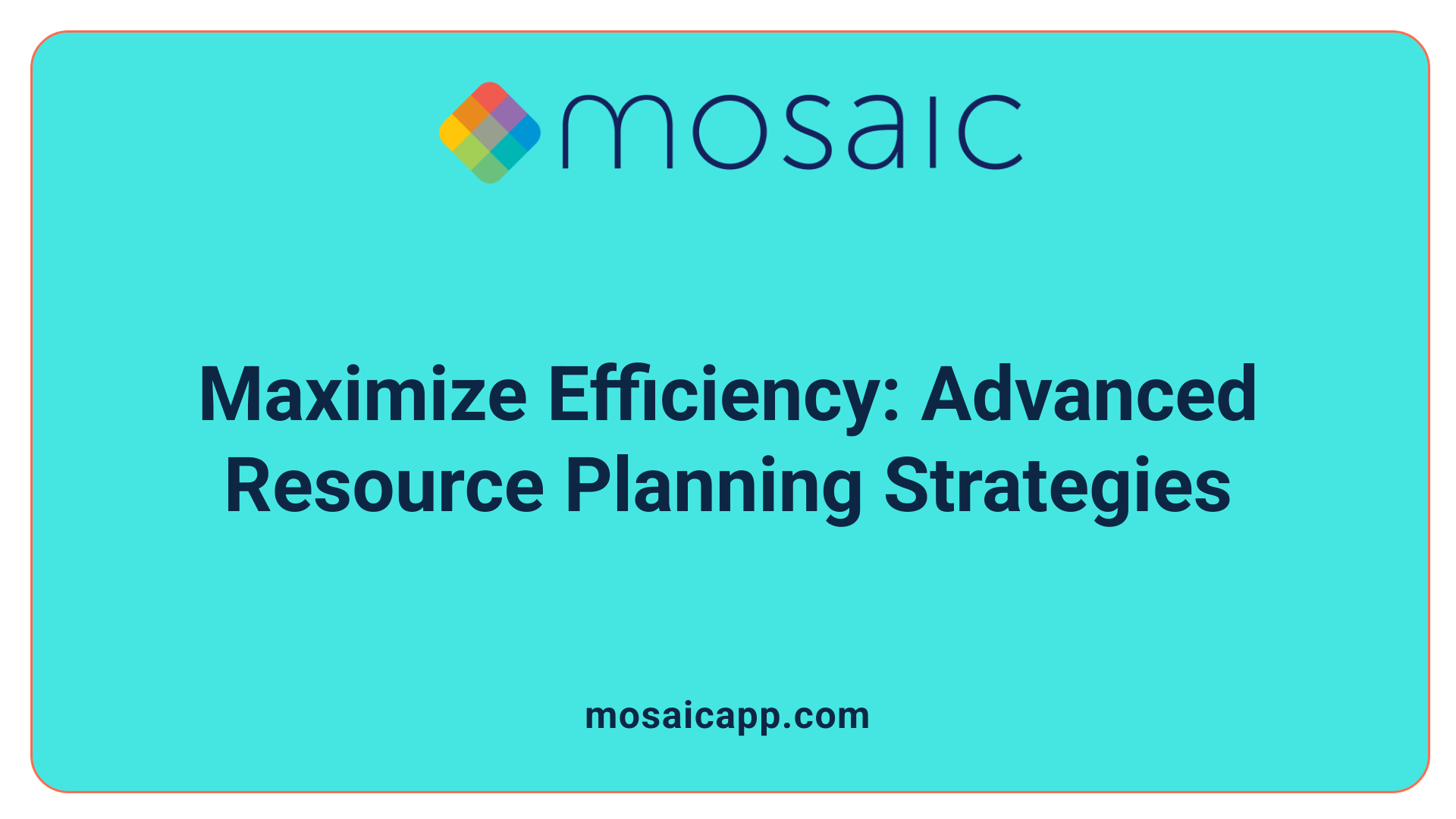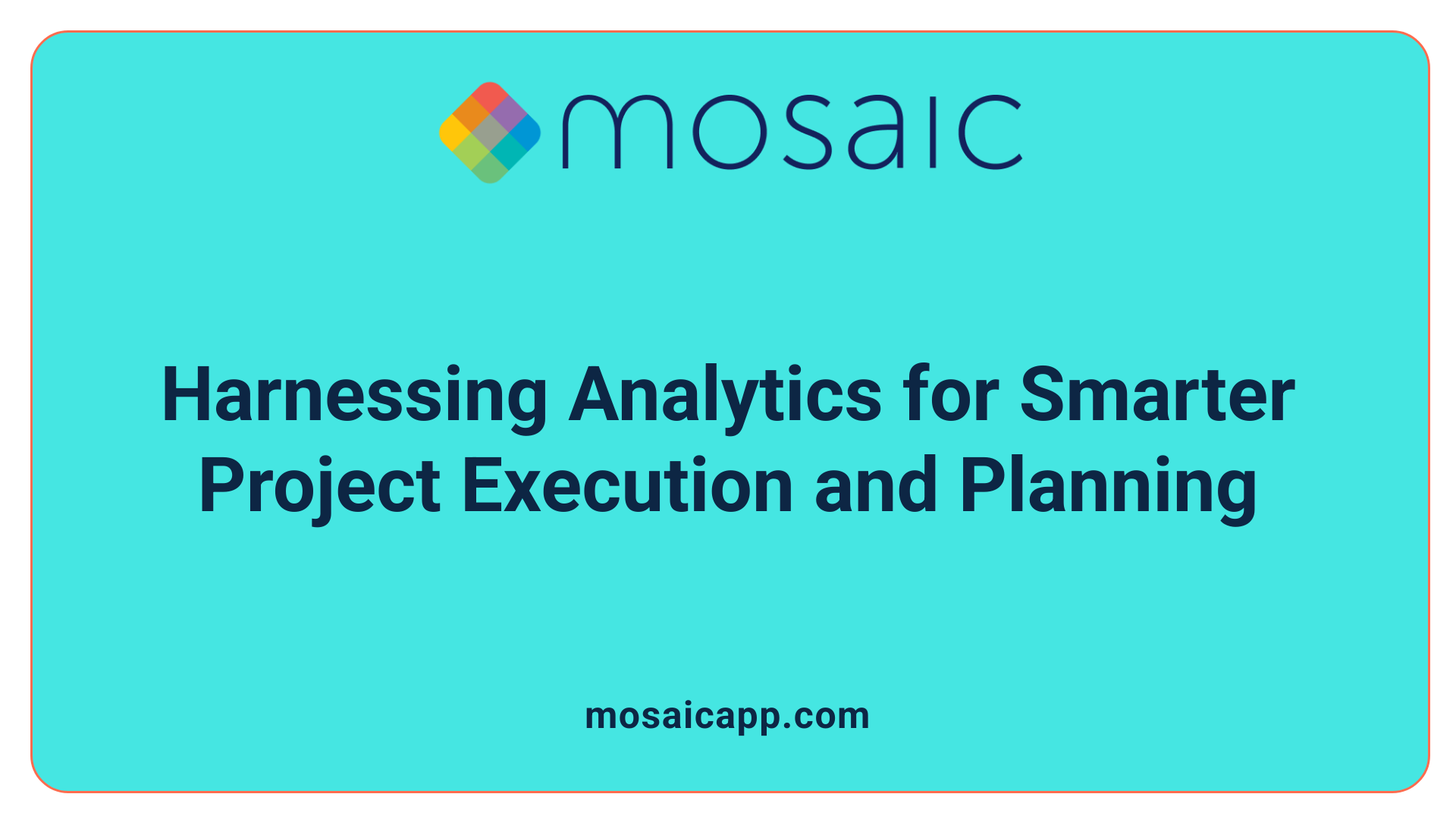The Crucial Role of Real-Time Resource Forecasting in Modern AEC Projects
In the rapidly evolving architecture, engineering, and construction (AEC) industry, the ability to access and utilize real-time data has become indispensable. As projects grow more complex, the necessity for accurate, timely insights into resources, budgets, and project status is critical for ensuring success. Real-time resource forecasting emerges as a vital tool, empowering architects and engineers to make proactive decisions, optimize resource allocation, and enhance project performance. This article explores the multiple facets of real-time forecasting, its technology frameworks, and best practices, illustrating why it is essential in today’s competitive environment.
Understanding the Importance of Real-Time Resource Forecasting

Why is timely data essential in project management?
In the fast-paced world of architecture, engineering, and construction (AEC), having access to real-time financial and resource data is vital for informed decision-making. It allows project managers to identify potential issues early, such as budget overruns, resource shortages, or delays. By continuously monitoring key indicators through dashboards and automated alerts, teams can adapt quickly to changing circumstances, ensuring projects stay on track.
How does real-time forecasting differ from traditional methods?
Traditional forecasting often relies on static data or periodic updates, which can leave gaps in understanding current project states. In contrast, real-time resource forecasting offers an up-to-the-minute view of resource utilization, financial health, and project progression. This dynamic approach improves accuracy for predicting future needs, aligning resources more effectively, and reducing costly surprises. Tools like Rapport3 and cloud-based systems facilitate instant data integration and visualization, enabling more precise planning and resource allocation.
Impact on project success
Access to real-time data significantly enhances project outcomes. It fosters transparency among stakeholders by providing shared, current information. This openness supports collaboration and consensus-building, essential for complex projects. Moreover, it empowers teams to proactively address issues, adjust budgets, and optimize resource deployment, ultimately leading to better delivery timelines and budget adherence.
How does real-time resource forecasting support decision-making?
By predicting future resource demand and supply — including personnel, equipment, and materials — organizations can plan staffing levels and procurement strategies effectively. Advanced techniques like trend analysis, time series forecasting, and scenario modeling help uncover potential bottlenecks. Modern tools like SAVIOM’s software provide visibility into resource gaps and simulate different scenarios, helping businesses prepare for various project contingencies.
Future outlook: technology’s role in improving forecasting
Emerging advancements in AI and machine learning are set to further revolutionize real-time forecasting. Modern architectures, such as Lambda and Kappa, process vast data streams efficiently, offering near-instantaneous updates. These systems support automated decision-making and enable the development of live dashboards that continuously reflect the latest project status. As these technologies become more accessible, the reliance on real-time data for managing complex projects will grow, making it an integral part of strategic planning in the AEC sector.
Technological Foundations of Real-Time Forecasting in the AEC Industry

What role does real-time forecasting technology play in decision-making and financial management within the AEC industry?
Real-time forecasting technology is transforming how architecture, engineering, and construction (AEC) projects are managed. It provides immediate access to current data on project progress, costs, and resource status, enabling stakeholders to make well-informed decisions swiftly.
Advanced tools like reality capture technologies—such as laser scanning, drones, LiDAR, and AI—collect real-time data on-site, which is then analyzed through analytics platforms. These insights improve project planning, safety adherence, and early issue detection, reducing costly errors and cost overruns.
Cloud-based collaboration platforms, digital twins, and the Internet of Things (IoT) sensors further empower teams by offering dynamic forecasting capabilities. These tools support rapid adjustments in resource allocation and scheduling, enhancing operational efficiency and risk management.
In practice, these technologies enable proactive strategy shifts, better resource management, and smoother project execution, ultimately leading to more successful project delivery and long-term planning.
What are some techniques and best practices for implementing real-time resource forecasting for design and engineering professionals?
Effective real-time resource forecasting for design and engineering requires integrating diverse data sources such as project timelines, timesheets, and resource utilization metrics into dedicated, automated software systems. These systems facilitate continuous data collection and analysis, ensuring that forecasts reflect the most current information.
Best practices include establishing clear data protocols to maintain accuracy, engaging stakeholders regularly, and maintaining open communication channels. Breaking down projects into phases and specific tasks allows for granular forecasting and resource adjustment.
Employing techniques like scenario modeling—what-if analyses and trend monitoring—helps identify potential bottlenecks and resource gaps before they arise. KPIs such as utilization rates and project capacity serve as benchmarks for ongoing refinement.
Leveraging AI-driven scheduling tools and ensuring integration with financial and environmental, social, and governance (ESG) considerations further enhances forecasting precision. Regular retrospectives and scenario stress-testing are essential for continuous improvement.
Additional Insights
Technologies like dashboards, automation, and AI platforms are central to enhancing real-time visibility and decision-making.
Data integration tools such as Rapport3 facilitate seamless data sharing across project management workflows, linking financials with project updates.
Architectural considerations, such as Lambda and Kappa architectures, are also vital. Lambda Architecture combines batch and stream processing for large datasets, offering real-time insights with some complexity. Kappa Architecture simplifies this by processing data streams directly, providing faster and easier-to-maintain solutions.
By employing these advanced architectures and tools, the AEC industry can optimize resource planning, minimize waste, and improve overall project control, all while adapting swiftly to project changes.
Frameworks and Architectures for Data Processing and Forecasting

What are the different software architectures for building forecasting systems?
In today’s fast-paced industry environment, choosing the right system architecture is crucial for effective forecasting. Kinaxis, a leader in supply chain management technology, considers mainly two architectures: Lambda and Kappa.
Lambda Architecture is designed to handle large volumes of data by combining batch processing with stream processing. This hybrid approach allows companies to analyze historical data through batch layers while also providing real-time updates via stream layers. Implementing a speed layer in Lambda Architecture enables users to receive swift, current forecasts and to visualize them on live dashboards. However, this approach can be resource-intensive, requiring significant CPU and memory, and it introduces complexity due to maintaining two separate data pipelines.
In contrast, Kappa Architecture simplifies the system by eliminating the batch layer, relying solely on stream processing to update data continuously. This streamlined approach reduces system complexity, minimizes latency, and ensures forecasts are regularly refreshed using the most recent data. Consequently, Kappa offers a more maintainable and efficient solution for businesses seeking to improve forecast accuracy without the overhead of managing dual processing streams.
Modern supply chain management heavily depends on these architectures to process vast datasets and utilize machine learning models for predicting future demand and shipments. Both architectures support the deployment of advanced algorithms for demand forecasting, resource planning, and financial management, enabling organizations to respond swiftly to market changes.
| Architecture Type | Processing Method | Benefits | Drawbacks |
|---|---|---|---|
| Lambda | Batch + Stream | Flexibility, detailed historical data analysis | Complexity, high resource use |
| Kappa | Stream-only | Simplicity, real-time updates, easier maintenance | Might miss some batch data nuances |
Utilizing the right architecture allows businesses to create adaptive forecasting systems that provide timely insights, improve decision-making, and optimize resource allocation. As cloud computing and machine learning advance, these architectures will become even more vital in developing scalable, accurate, and efficient forecasting solutions.
Enhancing Resource Planning and Long-Term Project Success

How does real-time data improve resource allocation and efficiency in architectural and engineering projects?
Real-time data plays a crucial role in boosting resource efficiency by offering current, detailed insights into ongoing projects. Tools like RealCONs and emerging AI analytics help project teams identify potential delays or resource shortages early, enabling proactive adjustments.
By continuously monitoring resource utilization, firms can optimize staffing levels and workloads. AI-driven forecasting models predict future resource needs, allowing dynamic planning that aligns with project scope and timelines.
Integrating financial data and project management systems supports flexible resource allocation and precise budgeting. Cloud-based platforms facilitate scenario simulations, helping teams prepare for scope changes and prevent bottlenecks.
Collectively, leveraging real-time information leads to fewer delays, improved productivity, cost savings, and higher chances of project success, ultimately maximizing resource utilization throughout project lifecycles.
What techniques and best practices for implementing real-time resource forecasting for design and engineering professionals?
Implementing effective real-time resource forecasting begins with integrating data sources like project updates, timesheets, and resource utilization metrics into centralized software systems. These systems automate data collection and analysis, reducing manual errors.
Establishing clear protocols for data accuracy—such as regular audits and stakeholder engagement—ensures reliable input. Techniques like breaking projects into phases and tasks support detailed forecasting. Modeling scenarios, including what-if analyses, helps assess potential risks and capacity gaps.
Monitoring KPIs such as utilization rates and project deadlines allows teams to adjust resource plans promptly. Continuous improvement practices like retrospectives and trend analysis help refine forecasts over time.
Furthermore, adopting advanced tools such as AI-driven scheduling and incorporating financial and environmental, social, and governance (ESG) factors enhances strategic alignment and forecast precision. These best practices enable engineering professionals to respond swiftly to project changes, optimize resource use, and achieve long-term project success.
Impact of Analytics on Project Execution and Future Planning

How does real-time analytics impact project execution, planning, and forecasting in architecture and engineering fields?
Real-time analytics plays a crucial role in revolutionizing how architectural and engineering projects are managed. By providing immediate access to extensive project data, it empowers project teams to make faster, more informed decisions. This rapid data flow enables early identification of potential issues such as budget overruns, resource shortages, or schedule delays.
With real-time analytics, project managers can monitor ongoing activities constantly. They can spot delays or resource conflicts early on and adjust plans proactively, which greatly improves schedule adherence. Budget control also benefits as expenditures are tracked in real-time, allowing for quick corrective measures and avoiding cost overruns.
Advanced tools like predictive analytics, dynamic dashboards, and integrated project management software enhance transparency and collaboration among stakeholders. Platforms such as Rapport3 combine financial and project data, offering clear visual insights and automated alerts.
Frameworks like RealCONs demonstrate that improved data flow leads directly to better forecasting accuracy. This results in more reliable predictions related to project timelines, costs, and resource needs. Overall, real-time analytics fosters an agile and efficient project environment—key for the success of complex architectural and engineering endeavors.
By leveraging these technologies, firms can adapt swiftly, optimize resource use, and deliver projects on time and within budget, paving the way for future innovations in construction management.
Embracing the Future with Real-Time Resource Forecasting
The integration of real-time resource forecasting into architectural and engineering workflows is transforming how projects are managed, executed, and delivered. Advancements in technology such as AI, machine learning, digital twins, and seamless data integration underpin this shift, offering unprecedented visibility and control. Embracing these tools not only minimizes risks and maximizes efficiency but also enables firms to adapt swiftly to market demands and project complexities. As adoption of real-time data solutions continues to grow, it becomes clear that those who leverage these innovations will be better positioned to achieve project excellence, outperform competitors, and sustain long-term growth in a dynamic industry.
References
- The Value of Real-Time Financial Data in AEC Projects
- What is Resource Forecasting? An Ultimate Guide
- Software architecture for real-time big data
- The importance of forecasting and resourcing for your AEC ...
- Real-Time tracking and analysis in construction projects
- Leveraging AI for Dynamic Resource Allocation in Complex ...
- Strategic Resource Allocation to Maximize Efficiency in ...


